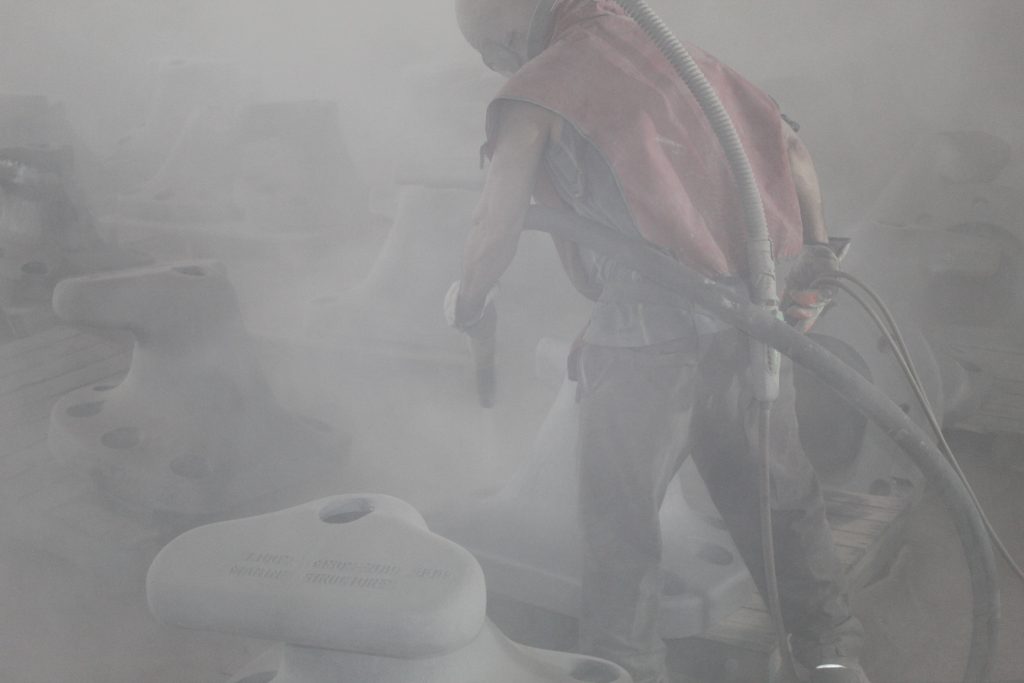The Importance of Prepping Steel Surfaces Before Priming and Painting Marine Bollards
When preparing for a maritime project, many engineers think about all of the products that must be costed out to complete the build successfully. Bollards, cleats, nuts, bolts and concrete are major parts of the list along with installation and labor. Many times, an important step is left out of the job quote, which could determine the failure of some construction projects. Coatings for steel is an important step that needs to be included to ensure the longevity of most steel products. One should never overlook the importance of prepping metal surfaces before priming and painting a bollard. Jeff Schmucker of Carboline Company recently provided Marine Structures with some valuable reasons why coatings in harsh environments are important to steel products.
____________________________________________________________________________
“For highly corrosive marine environments, no other protective coating provides more economical corrosion protection than zinc-rich coatings. Both inorganic and organic types provide galvanic protection, which means they sacrifice the zinc fillers to protect the underlying steel from corrosion. Inorganic zinc provides equivalent or better protection than galvanizing, particularly in salt-laden marine environments. The primary reason for top coating zinc-rich paints is to shield them from extreme chemical exposure and to obtain a color other than light grey.
In order for the zinc to sacrifice itself it must be in intimate electrical contact with the steel. This factor makes proper surface preparation an essential step in the use of these materials. Abrasive blasting is the most widely performed and economical method of achieving a clean surface. This cleaning is specified by referencing one or more widely recognized industry standards published by SSPC (The Society for Protective Coatings) or NACE (The Corrosion Society). Removal of surface contamination such as oil, grease, rust, millscale or old paint allows the zinc particles to develop intimate contact. The degree of protection and longevity of the coating is directly affected by the degree of cleaning performed. A “Commercial Blast” which exposes 66% bare steel is the minimum acceptable degree of cleaning, and a “Near White Blast” that exposes 95% bare steel is preferred. Additionally, the abrasive used in the blasting generates a rough texture on the surface known in the industry as “profile.” Control this profile by selecting the proper sized blasting abrasive with fine abrasive creating a low profile and coarse abrasive generating a higher one. The preferred range of profile for zinc-rich coatings is 1.5-2.5 mils (0.0015”-0.002”).
When zinc-rich coatings are properly mixed and applied over thoroughly cleaned steel, they can reliably provide 10-20 years of protection in marine environments and 20-30+ years on inland structures with inorganic products providing longer protection.”
____________________________________________________________________________
If you have further questions regarding coatings for your projects, you can reach out to Jeff Schmucker with Carboline Company at 336-963-6070. Marine Structures provides quality marine bollards, cleats and extruded fenders for projects worldwide. If your next project needs quality maritime products, please reach out for a quote here.